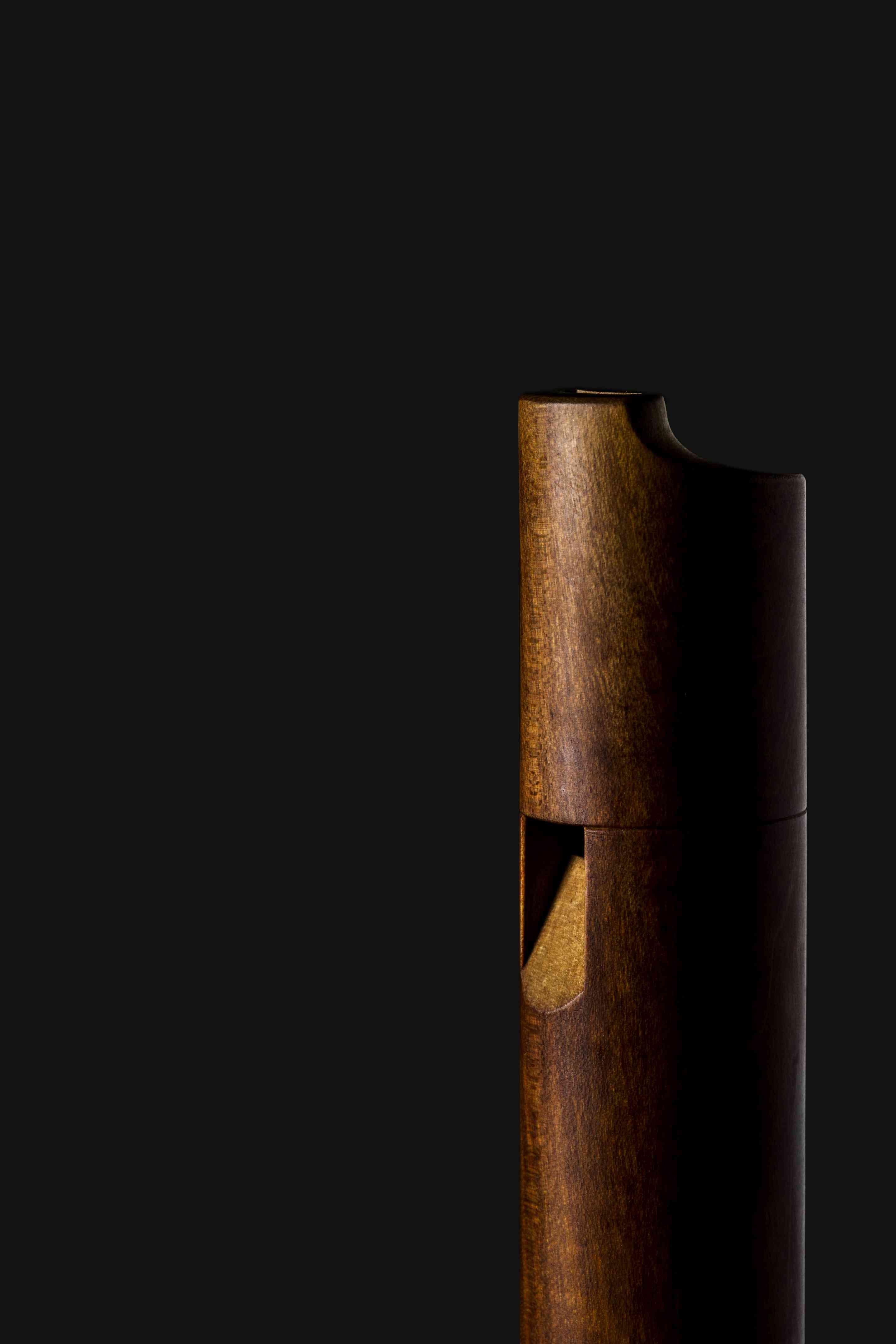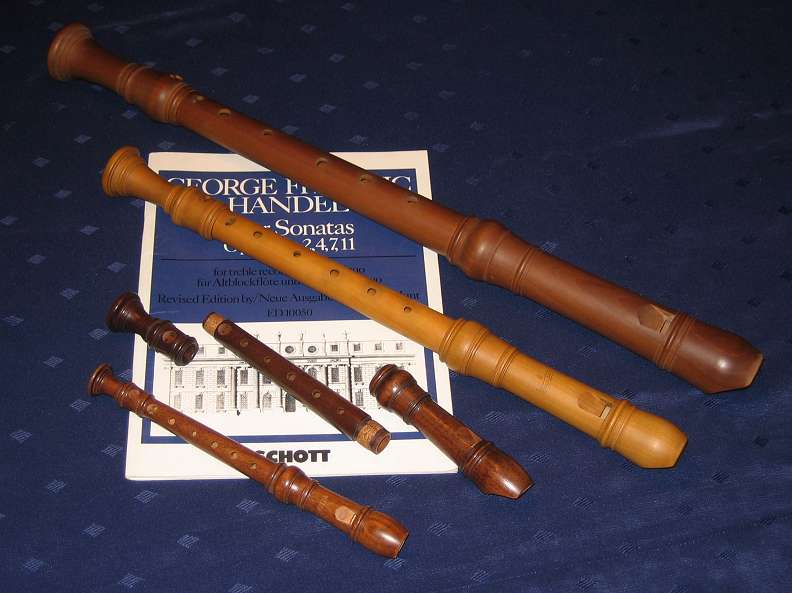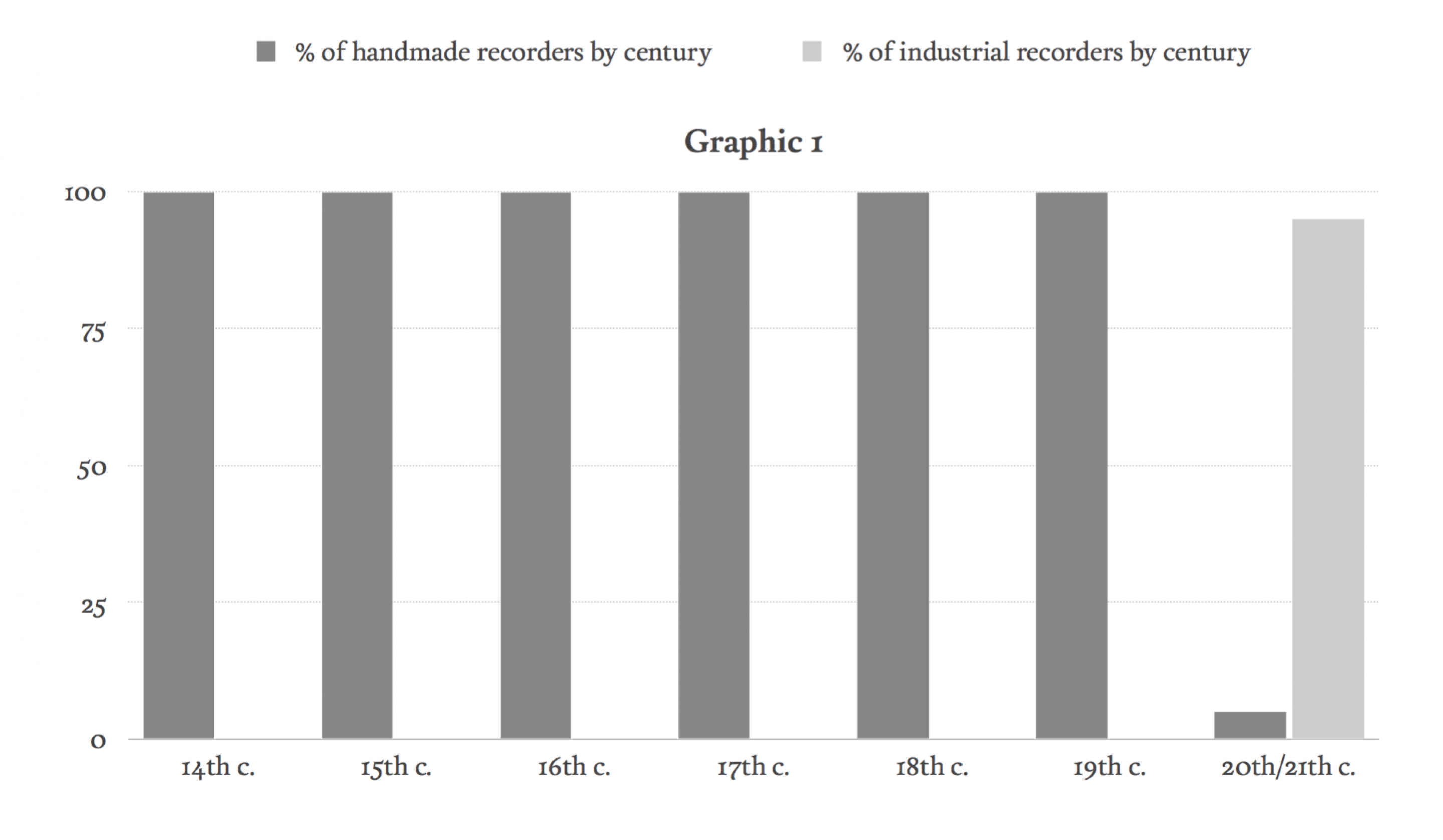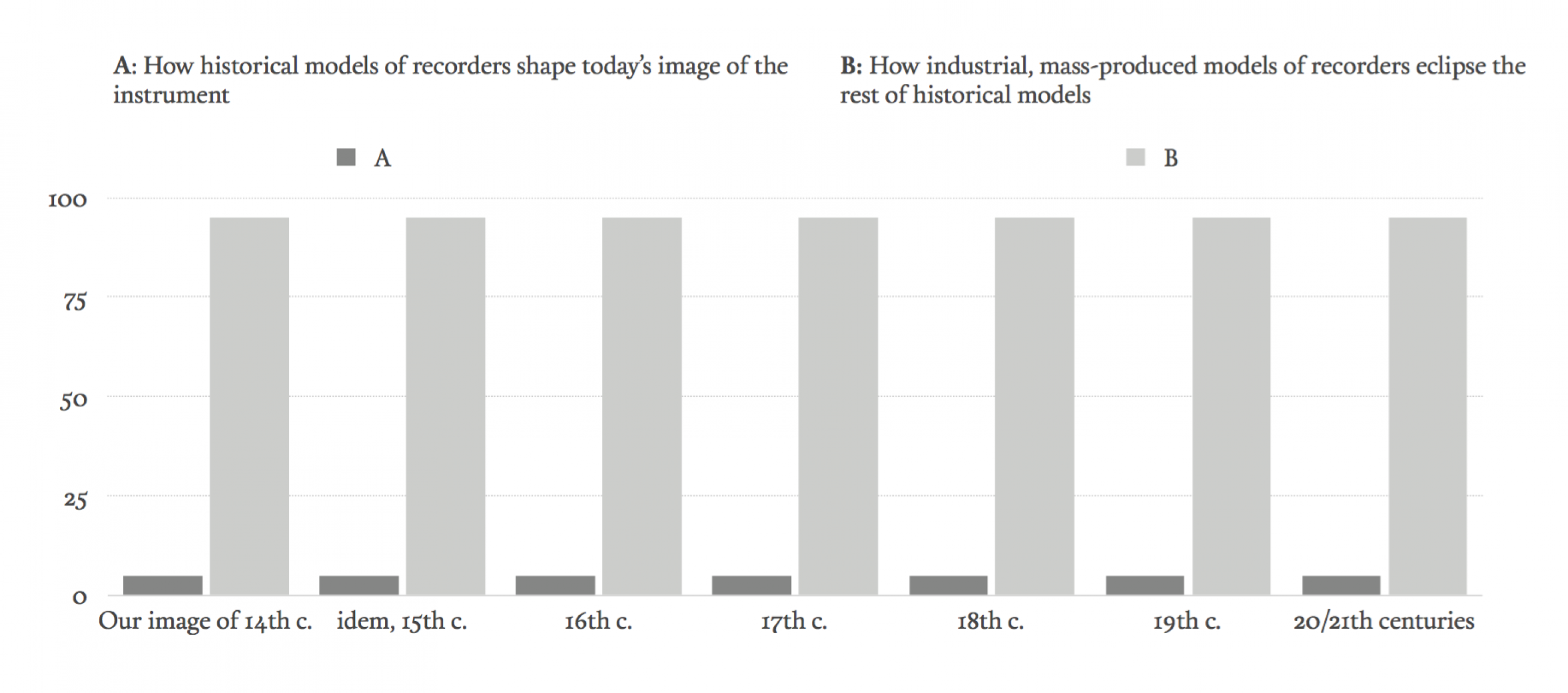The World’s Most Important Photograph of a Recorder

An initial search of the internet throws up numerous images of plastic, or mass-produced, cheap instruments, while images of historic or professional models need to be sought out. A concerted effort from the recorder community is needed in order to shift perspectives in the opposite direction and to change the public’s perception of our beautiful instrument.
—Laoise O’Brien
The photograph
The title of this post may make you wonder “Why should it even exist?” or, “Why there should be one?” Indeed, it may seem like a weird idea, and I had never thought of the possibility that such a photograph might even exist before — until now. I guess you’re asking yourself what would that photo be for you right now, and I’d love to know your choices. Mine? Sorry to disappoint you, it’s clearly not the one above nor a similar one, but here’s my answer:

Were you expecting a nicer photo? Sure. Why then did I choose that one, and why I think it’s so important? Well, I’m not judging it according to how nice it looks —in fact, I think it looks awful, both the photo itself and the mass-produced recorders on it— but rather according to its provenance.
The website
Which, as a side note, brings me to a rather more important question: what do you think is the world’s most important online resource about the recorder? Just as every recorder connoisseur, whether professional or amateur, I’d run to answer it sure is Nicholas S. Lander’s impressive Recorder Home Page — but I’m afraid that, for the vast majority of people, it’s not. I really hope I’m wrong, but I’d bet today’s most widely known, most often visited and widespread online resource about the recorder (just like about almost everything else) is probably Wikipedia. This article, to be exact.1
The problem
Back to the (in)famous photo: as you’ll have probably seen, it’s now gloriously placed at the top right of Wikipedia’s recorder article, meaning it’s probably the world’s most important photograph of a recorder (or, at least, the most viewed one).2 And what’s wrong about it?
Well, I think we could all agree that the cheap, mass-produced contemporary version of the recorder is already well known to the general public and certainly does not need more public exposure.3 But what about the handmade, meticulously handcrafted version —and, when I say handcrafted, I really mean it— of a good recorder? That’s what we should really think of when imagining a recorder, instead of today’s widespread plastic toy or the poor sounding, mass-produced version of it.
It’s in this sense that I think the current version of Wikipedia’s recorder article is doing a great disservice to the professional, historical, handmade real instrument, which certainly deserves greater public awareness — and that’s what should be mainly featured on such an important article.
The graphics
Graphics is probably the most eloquent tool to visualise the above reasoning. Here are two of them that, I warn you, illustrate some pretty obvious data, but at the same time will be very useful to demonstrate how today’s image of the recorder for most people is shaped: basically, we’re judging an at least seven centuries-old musical instrument on our superficial knowledge of just one of them (from the twentieth-century to present day.)
The first graphic is meant to compare, with an approximate percentage, the amount of mass-produced, industrial recorders vs. handmade ones throughout recorder history.
Graphic 1

This was an easy one. But let me further clarify the graphic:
-
Amount of handmade recorders:
1.1. 14th–19th centuries: obviously, 100% of recorders made during the 14th–18th centuries were handmade, and probably about the same amount is still valid for the ones from the 19th c. (but this is difficult to say, since the recorder almost disappeared by that time, unless we consider the csakan too — for some, the recorder of the 19th-century), although it must have been a very high percentage too.
1.2. 20th century–today: no way to find the right percentage of handmade recorders made since the 20th-century (just because of the countless amount of industrial recorders that have been produced since then), but I’d guess, simply as a reference, they’d be somewhere between 3–5% of the total. -
Amount of mass-produced recorders:
2.1. 14th–19th centuries: for obvious reasons, no industrial recorders were made during the 14th–17th centuries (0%), which is probably still true for the 18th century, and who knows if there was any of them already made during the 19th century, considering that at least one of the many companies that would later collapse the world with whitish plastic was founded by mid-century.
2.2. 20th century–today: again, just as a possible reference —and I’m probably being moderated here— could we say that around 95% of recorders made since the 20th century are mass-produced?
Graphic 2

And here’s a second graphic that will help visualizing, on one hand, how poorly (if at all, since they’re largely unknown) historical recorder models are shaping today’s popular image of the instrument and, on the other hand, how industrial, contemporary mass-produced models of recorders eclipse the rest of historical models today, to the point that they’ve become today’s popular image of the instrument.
As I said before, these graphics display some pretty obvious data (I guess no one has ever thought of an industrial recorder from the 15th century, right?), plus they do not shed new light on the issue, but they’re quite effective at demonstrating how today’s popular image of the recorder is only based on its recent history, which means it’s a necessarily partial and biased view.
Improving Wikipedia’s recorder article
Yes, Wikipedia is certainly editable, so you could ask why I just didn’t try to change that photo. I did, but my edition only lasted for a few hours, since it was considered “unsuitable for this article’s lead” by a Wikipedia user. Discouraged, I haven’t tried again yet (although I’ve contributed some other photos of my own to Wikimedia), but one of the reasons why I’m writing this text is to let Wikipedia users know about the reasoning behind my edit attempt, in the hope that we’ll manage to improve the article in the near future.
The text
And since we’re at it, the same should be said for Wikipedia’s recorder article’s text: it’s of course very important that recorder scholars focus on doing highly specialised work, but I firmly believe that what probably constitutes today’s go-to place for accessing the most basic information about the recorder for the general public, shouldn’t be abandoned by recorder scholars.
Swartz’s vision
Hopefully, Wikipedia guardians should let them do their work, of course: on this issue, Aaron Swartz’s (1986–2013) ideas are especially illuminating:
“[Wikipedia founder Jimbo] Wales seems to think that the vast majority of users are just doing the first two —vandalizing or contributing small fixes— while the core group of Wikipedians writes the actual bulk of the article. But that’s not at all what I found. Almost every time I saw a substantive edit, I found the user who had contributed it was not an active user of the site. They generally had made less than 50 edits —typically around 10—, usually on related pages. Most never even bothered to create an account. […] It’s the outsiders who provide nearly all of the content.”
— Aaron Swartz, Who Writes Wikipedia?, September 4, 2006
Swartz realised that the main contributions to Wikipedia should be measured according to the amount of text edited by users (occasionally made by outsiders “who make one edit to add a chunk of information,” normally experts on a given subject), rather than the amount of edits, typically made by insiders who consistently “make several edits tweaking and reformatting it.”
For our own benefit, let’s all contribute in order to keep its text accurate and up to date.
29–12–15 Update: See this related post.
-
Though a direct comparison would not be possible since we’d be comparing a single URL against an entire website—and naturally only Nicholas Lander could know about the Recorder Home Page’s view numbers—a fair view of Wikipedia article traffic statistics are publicly available: check here the number of page views the former article has had in the last 90 days, for instance. ↩
-
Only in this article, about 16117 times in November 2015, for example. But see footnote 3. ↩
-
Just look at the global usage for this photo on other wikis.’ ↩